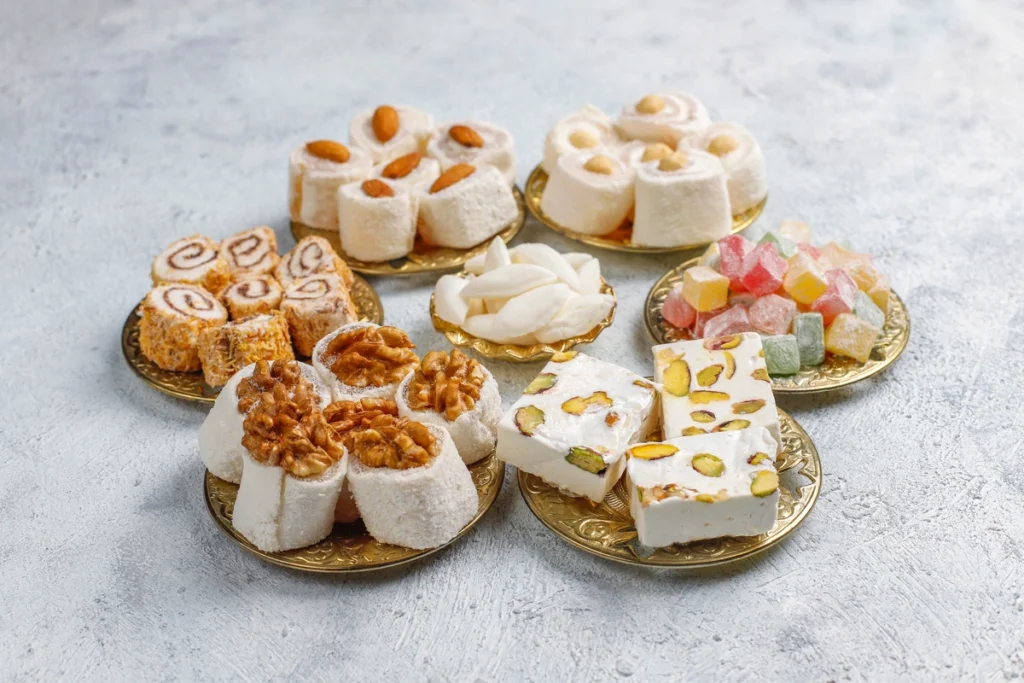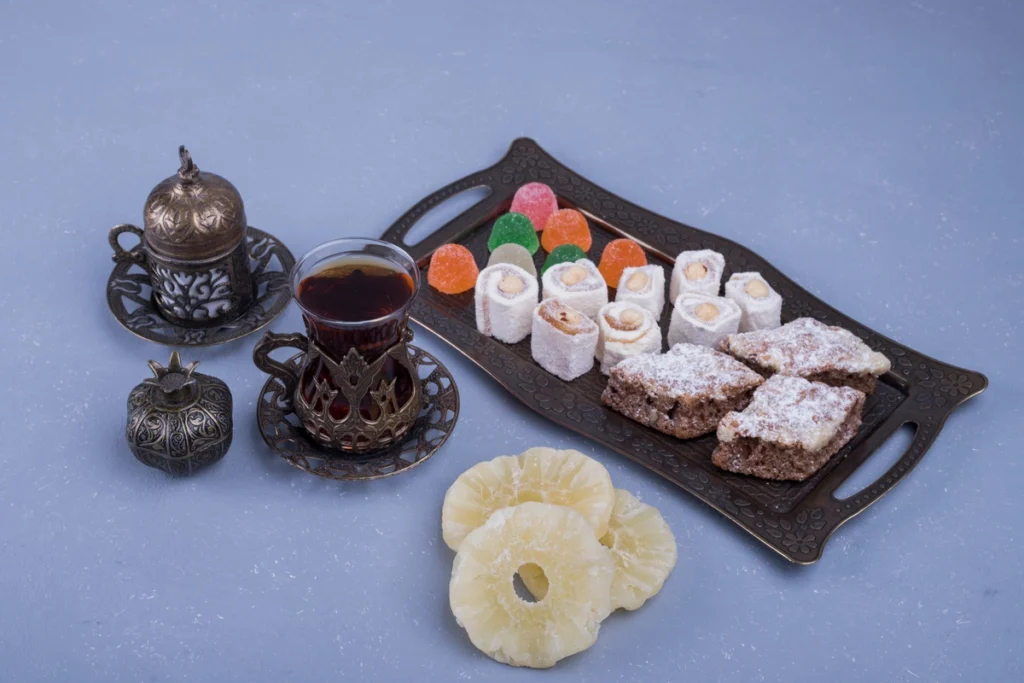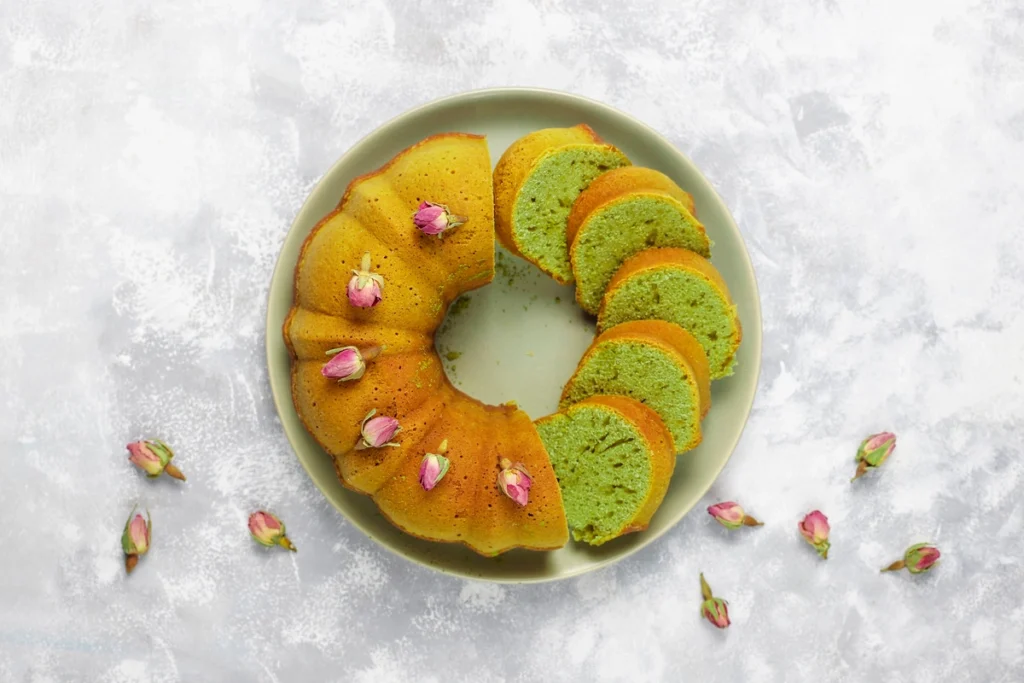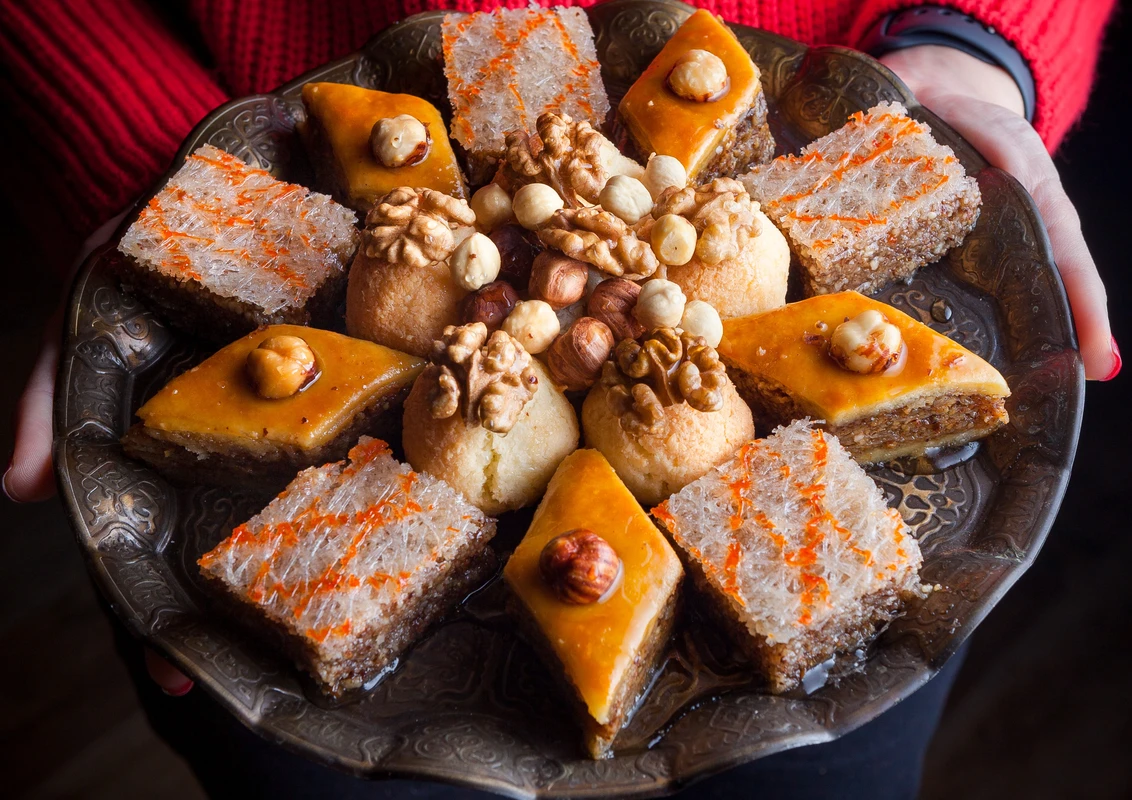Arabic sweets are a celebration of tradition, culture, and irresistible flavors. From their intricate designs to their aromatic ingredients, these desserts are cherished across the Middle East and beyond. Whether it’s the flaky layers of baklava, the delicate sweetness of kunafa, or the melt-in-your-mouth maamoul, Arabic sweets offer a unique blend of textures and tastes that have delighted generations.
Making these desserts at home is more than just a culinary endeavor—it’s an opportunity to immerse yourself in the artistry of Middle Eastern cuisine. While they may seem intricate, with the right guidance and tools, you can recreate the magic of authentic Arabic sweets in your own kitchen.
In this blog, we’ll guide you through everything you need to know, from essential ingredients to step-by-step recipes for popular desserts. Discover the secrets to perfecting these time-honored treats and enjoy the satisfaction of crafting your own homemade Arabic sweets. Get ready to embark on a delicious journey into the heart of Middle Eastern desserts!
The Charm of Authentic Arabic Sweets

Arabic Sweets: A Reflection of Middle Eastern Culture and Tradition
Arabic sweets are not just desserts; they are a reflection of the Middle East’s rich history, culture, and culinary tradition. These confections hold a special place in the hearts of those who have grown up enjoying them during family gatherings, religious celebrations, and everyday tea times. The charm of authentic Arabic sweets lies in their ability to bring people together, often over a cup of coffee or tea.
Unique Blend of Flavors and Textures
What sets Arabic sweets apart is their distinctive blend of flavors and textures. Ingredients like honey, rose water, orange blossom, pistachios, almonds, and dates are staples, each adding a unique touch to the final creation. Desserts such as baklava, with its flaky layers of phyllo dough and rich nut filling, or kunafa, with its delicate cheese center and crispy pastry exterior, are beloved across the globe.
Tradition and Storytelling
Arabic sweets hold deep ties to tradition and storytelling. For example, families often prepare maamoul, a buttery date-stuffed cookie, in large batches during religious holidays like Eid. Similarly, people favor basbousa, a semolina-based dessert soaked in syrup, for its simplicity and sweetness. Families pass down recipes for these desserts through generations, preserving their authenticity.
Versatility and Presentation
Moreover, Arabic sweets are highly versatile. They can be served as a light treat after a meal, given as gifts during festive occasions, or enjoyed as a midday snack. Their beauty is not just in their taste but also in their presentation, with intricate designs, golden hues, and glistening syrups adding to their allure.
Essential Ingredients and Tools for Making Arabic Sweets
Crafting authentic Arabic sweets requires a precise combination of ingredients and tools that give these desserts their signature flavors, textures, and cultural significance. While the specific recipes may vary depending on the region or occasion, there are key staples that remain consistent in creating these beloved treats.

Key Ingredients:
1. Semolina:
A fundamental ingredient in Arabic sweets like basbousa and harissa, semolina adds a coarse, crumbly texture that soaks up syrup beautifully, contributing to the signature moistness of many traditional desserts. Its granular texture offers a satisfying bite and helps to create that perfect, melt-in-your-mouth consistency when combined with sweet syrup.
2. Nuts:
Pistachios, almonds, and walnuts are staples in Arabic sweets, playing a crucial role in both flavor and texture. Whether used as a filling, topping, or garnish, these nuts provide a delightful crunch and a rich, earthy flavor. Pistachios, in particular, are often used in iconic desserts like baklava and are a symbol of luxury in many Arabic cultures.
3. Honey and Syrups:
Many Arabic desserts are traditionally soaked in a sweet syrup made from sugar, water, and lemon juice. This syrup, sometimes flavored with rose or orange blossom water, adds a rich sweetness and a fragrant floral aroma to the sweets. The syrup also helps to bind the dessert ingredients together and enhance their flavors, making it an essential component in dishes like baklava and kunafa.
4. Rose Water and Orange Blossom Water:
These fragrant waters are an integral part of Arabic desserts, lending a delicate, floral aroma that is both refreshing and luxurious. Used in syrups, batters, or as a finishing touch, rose and orange blossom water are signature elements that set Arabic sweets apart from those of other cultures. Their subtle floral notes offer a perfect balance to the richness of the nuts, honey, and other ingredients.
5. Dates:
Dates are a symbol of hospitality and are often used in Arabic sweets like maamoul. Known for their natural sweetness and chewy texture, dates bring a deep, caramel-like richness to the desserts. The combination of dates and nuts creates a harmonious balance of flavors, making it a key feature in many traditional Arabic cookies and pastries.
6. Phyllo Dough:
Phyllo dough is a thin, delicate pastry that is essential for desserts like baklava and kunafa. When layered and baked, it creates a crisp, flaky texture that contrasts beautifully with the sweet syrup or cheese filling. Phyllo dough requires careful handling, but when done right, it creates the signature texture that makes these desserts irresistible.
7. Cheese:
In desserts like kunafa, a mild, stretchy cheese—typically akawi or a similar variety—provides a creamy, rich filling that complements the crispy phyllo dough. The cheese adds a salty-sweet balance that is a hallmark of Arabic sweets, offering a savory contrast to the sugary syrup and floral notes of rose or orange blossom water.
Essential Tools:
1. Rolling Pin:
A classic tool for working with phyllo dough or shaping cookies like maamoul, the rolling pin is essential for achieving the thin layers of dough required in many Arabic pastries. It’s used to roll out dough evenly and thinly, ensuring that it bakes to a perfect crisp.
2. Maamoul Molds:
These decorative wooden or plastic molds are used to shape maamoul cookies, which are often filled with dates, nuts, or figs. The intricate designs on the molds give the cookies a beautiful, traditional look, making them both a treat for the eyes and the taste buds. Using maamoul molds helps create uniform, well-shaped cookies that retain their shape during baking.
3. Baking Trays:
Various sizes of baking trays are needed to accommodate the wide range of Arabic desserts. For large, communal desserts like kunafa or basbousa, a larger tray is necessary to ensure even baking and distribution of syrup. Smaller trays are perfect for baking individual portions or more intricate pastries.
4. Brushes:
Pastry brushes are used for evenly spreading butter, ghee, or syrup over dough and pastries. This ensures that every layer of phyllo dough is perfectly coated for a crisp, golden finish. Brushes are also helpful for glazing or adding a final touch of syrup to a freshly baked dessert.
5. Pistachio Grinder:
To create finely ground nuts for garnishing desserts, a pistachio grinder is a useful tool. Grinding pistachios allows for a fine, uniform texture that can be sprinkled over pastries like baklava or added to the filling of other desserts. The freshly ground pistachios also enhance the flavor, ensuring a richer, more authentic taste.
Step-by-Step Guide to Making Popular Arabic Desserts
Creating Arabic sweets at home may seem intimidating at first, especially with the variety of unique ingredients and techniques involved. However, with the right approach and a little practice, you can master some of the most beloved and iconic desserts in Arabic cuisine. Below is a simplified guide to three popular and delicious Arabic sweets—baklava, kunafa, and maamoul—each with its own distinctive flavors and textures. These recipes are easier to follow than you might think, and once you’ve made them a few times, you’ll be able to impress your friends and family with your homemade creations.

1. Baklava:
Prepare the Layers:
Baklava is known for its delicate, flaky texture, which is achieved by layering thin sheets of phyllo dough. Start by laying the first sheet of phyllo dough in a baking pan, ensuring it covers the base completely. Then, brush the dough with melted butter, making sure it’s evenly coated. Repeat this process with several more sheets, always brushing each layer with butter, which will help the dough crisp up and create that signature flaky texture.
Add the Filling:
Baklava’s filling is typically made from finely chopped nuts, with pistachios, walnuts, or almonds being the most common choices. Combine the chopped nuts with sugar and a pinch of cinnamon for added warmth and depth of flavor. Spread this nut mixture evenly over the layered dough. The nuts will provide a crunchy contrast to the soft, buttery layers of phyllo dough.
Bake and Soak:
Once your layers and filling are assembled, bake the baklava in a preheated oven until it turns golden brown and the layers become crisp. As the baklava bakes, prepare the syrup by combining honey, sugar, and water in a saucepan, and simmer it until the sugar dissolves. Once the baklava is done, remove it from the oven and immediately pour the warm syrup over the crispy, hot layers. The syrup will soak into the layers, giving the baklava its characteristic sweet, sticky texture.
2. Kunafa:
Prepare the Crust:
Kunafa, another iconic Arabic dessert, has a crunchy, buttery crust made from shredded dough called kataifi. To make the crust, shred the kunafa dough and mix it with melted butter. This combination creates a rich, crispy texture that contrasts beautifully with the smooth, creamy filling. Ensure that the dough is evenly coated with butter, as it will help achieve a golden, crispy crust when baked.
Fill with Cheese:
The most traditional filling for kunafa is a mild, stretchy cheese, such as akawi, which balances the sweetness of the syrup. Spread half of the buttered dough mixture evenly in the bottom of a baking pan. Then, layer the cheese on top, spreading it out evenly. Add the remaining half of the dough over the cheese, ensuring it’s well distributed to form a uniform layer. The cheese filling melts slightly during baking, creating a rich, gooey texture that pairs perfectly with the crispy crust.
Bake and Sweeten:
Bake the kunafa in a preheated oven until the dough turns golden and crispy. Once baked, remove the pan from the oven and immediately drizzle with a simple syrup made of sugar, water, and a splash of rose or orange blossom water. The syrup adds sweetness and a subtle floral note that’s a signature of many Arabic sweets.
3. Maamoul:
Make the Dough:
Maamoul is a popular Arabic cookie made from semolina, butter, and water, creating a rich and soft dough. To make the dough, mix semolina with butter until it becomes crumbly, then gradually add water to form a smooth, soft dough. This dough is both delicate and slightly dense, which helps it hold the shape once pressed into molds.
Add the Filling:
The filling for maamoul typically consists of either date paste or a mixture of ground nuts like walnuts or pistachios. For date-filled maamoul, roll small portions of date paste into balls and place them in the center of the dough. For nut-filled maamoul, combine ground nuts with sugar and spices like cinnamon, then stuff the mixture into the dough. Once filled, shape the dough into small rounds or press it into special maamoul molds to create intricate patterns.
Bake:
Once the maamoul is shaped, place the cookies on a baking tray and bake them until they are lightly golden brown and fragrant. The result is a beautifully delicate cookie with a crisp exterior and a soft, flavorful center. Once cooled, the maamoul is ready to enjoy, often dusted with powdered sugar to add an extra touch of sweetness.
Tips for Success:
- Patience is Key: Arabic sweets require patience, especially when working with phyllo dough or achieving the right balance of syrup. Take your time to layer and bake your desserts properly for the best results.
- Experiment with Fillings: While traditional fillings are delicious, don’t be afraid to experiment. You can swap out pistachios for hazelnuts, or try different syrups to give your baklava a unique twist.
- Serve Fresh: Arabic sweets are best enjoyed fresh. Serve them immediately after preparing or store them in airtight containers to keep them fresh for longer.
Final Thoughts:
While creating these Arabic sweets may seem challenging at first, with practice, you’ll find that they’re not as difficult to make as they might initially appear. Each dessert—baklava, kunafa, and maamoul—has its own unique preparation process, but they all share the same rich flavors, textures, and cultural significance. Once you master these recipes, you’ll be able to share the delicious flavors of Arabic sweets with your friends and family, impressing them with your culinary skills and adding a touch of Middle Eastern sweetness to any occasion.
Tips for Perfecting Your Homemade AR Sweets
Crafting Arabic desserts requires precision and patience. These tips can help you achieve professional-quality results:
- Use Fresh Ingredients: Always use fresh nuts, spices, and dairy products to enhance flavors.
- Don’t Rush the Syrup: Let the syrup cool slightly before pouring it over hot pastries, as this prevents sogginess.
- Work with Phyllo Dough Carefully: Keep the dough covered with a damp cloth to prevent it from drying out while working with it.
- Be Generous with Butter: Butter adds flavor and ensures crisp layers, so don’t skimp.
- Allow Resting Time: Many sweets, like maamoul, benefit from resting the dough for better texture.
- Adjust Sweetness: Control the sugar level in the syrup to suit your taste preference.
Following these tips ensures that your Arabic sweets are both authentic and delicious.
Serving and Storing Your Sweets
Presentation and preservation are as important as the preparation process when it comes to Arabic sweets.
Serving Suggestions:
- Arrange Beautifully: Use decorative trays to showcase your sweets. Garnish with crushed pistachios or a drizzle of syrup for added appeal.
- Pair with Tea or Coffee: Arabic sweets pair beautifully with hot beverages like mint tea or Arabic coffee.
- Serve Fresh: Desserts like kunafa taste best when served warm and fresh out of the oven.
Storing Tips:
- Baklava and Maamoul: Store in airtight containers at room temperature for up to a week.
- Kunafa: Refrigerate leftovers and reheat in the oven for the best results.
- Freezing: Many Arabic sweets, such as maamoul and basbousa, freeze well. Wrap them tightly in plastic wrap and store for up to three months.
By storing them properly, you can extend the life of your homemade sweets while maintaining their flavor and texture.
FAQ About Arabic Sweets
Arabic sweets are as intriguing as they are delicious, and many people have questions about them. Here are some of the most frequently asked questions about Arabic desserts:
1. What are the most popular Arabic sweets?
Some of the most iconic Arabic sweets include baklava, kunafa, basbousa, maamoul, halawa, and luqaimat. Each dessert has its unique flavor, texture, and preparation method, making them loved by people worldwide.
2. Are Arabic sweets always very sweet?
While many sweets are known for their sweetness, the level of sugar can be adjusted in homemade recipes. For example, you can reduce the sugar in syrups or fillings to suit your taste preferences.
3. Are Arabic sweets difficult to make?
Some desserts, like baklava and kunafa, require practice and patience due to their intricate layering and delicate preparation. However, simpler recipes like basbousa or maamoul are more beginner-friendly and still deliver authentic flavors.
4. Can Arabic sweets be made gluten-free or vegan?
Yes, many recipes can be adapted for dietary needs. For gluten-free versions, use almond or coconut flour instead of semolina or wheat flour. For vegan adaptations, substitute butter with plant-based alternatives and avoid dairy-based fillings.
5. What makes Arabic sweets unique compared to other desserts?
Arabic sweets stand out because of their use of ingredients like rose water, orange blossom water, pistachios, and dates, which give them their distinct aroma and taste. Additionally, their emphasis on textures, such as crispy layers or soft fillings, makes them truly special.
6. Where can I find authentic ingredients for Arabic sweets?
You can find many essential ingredients for sweets at Middle Eastern or Mediterranean grocery stores. Online retailers also offer specialized products like rose water, orange blossom water, and kunafa dough.
7. How long do Arabic sweets last?
The shelf life of Arabic sweets depends on the type. Desserts like baklava and maamoul can last for several days at room temperature if stored in airtight containers. Others, like kunafa, are best consumed fresh or within a couple of days when refrigerated.
This FAQ section helps address common curiosities and ensures readers feel confident in exploring and preparing Arabic sweets.
For more recipes click here


1 thought on “How to Make Authentic Arabic Sweets at Home”